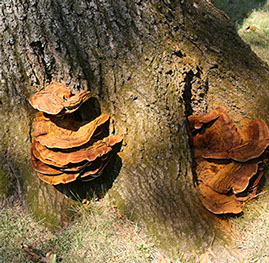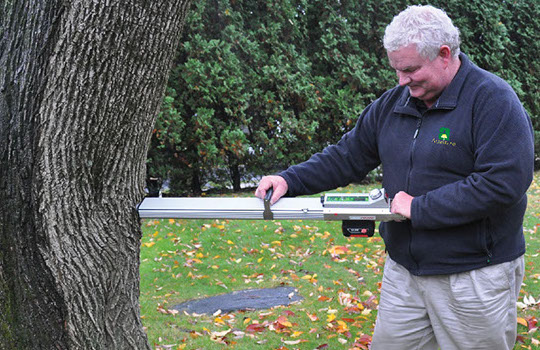
The science of preserving nature since 1964
Please contact us for a FREE Consultation


Consulting: Tree Risk Assessment
Assessing and dealing with risky trees is really important when managing a tree population... whether it’s one tree, or a thousand...
There are many conditions that increase the likelihood that all or part of a tree will fail. In urban and suburban settings, the failure of a tree often leads to property damage and/or personal injury. Inspecting mature trees periodically for hidden decay, structural weaknesses and diseases can extend their lives and mitigate the risk of failure of the tree or its branches. Falling trees and branches can cause serious injury to people and extensive damage to property. It takes a trained and experienced arborist to inspect a tree, conduct the required testing and interpret the results accurately.
All Almstead arborists have training in tree risk assessment and usually inspect trees visually when they are on site for issues with the trunk, crown, and root zone. In addition, some of our arborists have also undergone the more extensive Tree Risk Assessment Qualification (TRAQ) program offered by the International Society of Arboriculture (ISA). The TRAQ method provides a standardized and systematic process for assessing tree risk. It helps arborists and property owners decide whether a tree should be retained, removed, or whether risk mitigation techniques, such as pruning, cabling, etc., should be considered.

There are many visual signs that a tree may be declining and/or hazardous, including the presence of conks or fruiting bodies growing on the tree or close to its base.

Your arborist will give you a report of his findings along with recommendations.
The TRAQ system utilizes a detailed tree risk assessment form that arborists complete while inspecting trees on a property. In addition to basic data, such as species, diameter of the tree at breast height (DBH), tree height and crown spread, it also requires the arborist to record and evaluate other detailed information about the location, conditions, defects in the tree’s trunk, crown, and roots, as well as potential targets if the tree or its branches fall. Based on this information, as well as results other testing, using specialized tools such as a Resistograph (see box on right), the arborist is able to create a comprehensive report that offers a complete analysis of each tree and its risk of failure.
The Resistograph
Not all trees that may fail display outward signs of stress. Almstead is one of a select few companies trained to use Resistograph technology. With this state-of-the-art system, our arborists are able to graphically measure the drilling resistance of a tree. This allows them to accurately locate and determine the amount of any internal defects, such as rot and decay, in a tree without causing significant wood damage.


Utilizing a series of resistograph readings, we can estimate the decay pattern present in a tree.
Lower Westchester 914-576-0193 I Upper Westchester 914-741-1510 I Fairfield County, CT 203-348-4111 I Bergen & Passaic County, NJ 973-636-6711
Make a Payment I Careers at Almstead I Commercial Care I Tree Care I Lawn Care I Plant Health Care I Organic I Consulting I Nursery & Mulch I Insect Control I Newsletter I Contact Us
Copyright 2023 Almstead Tree, Shrub & Lawn Care Company I All rights reserved I Content on this site cannot be used without permission.


